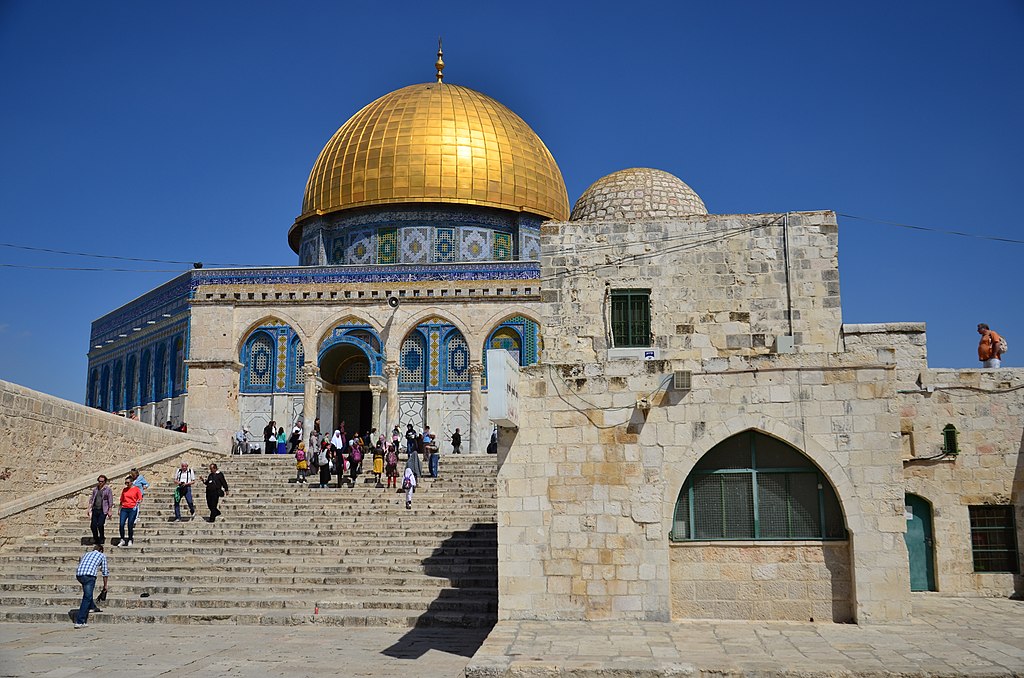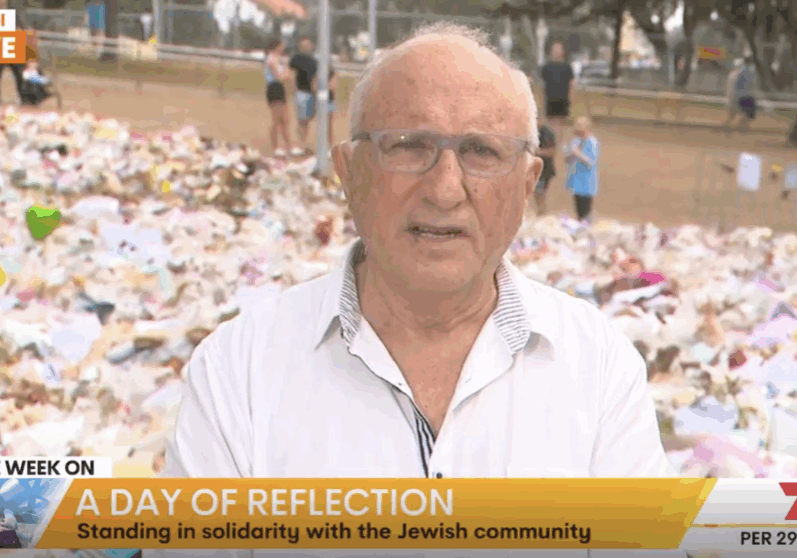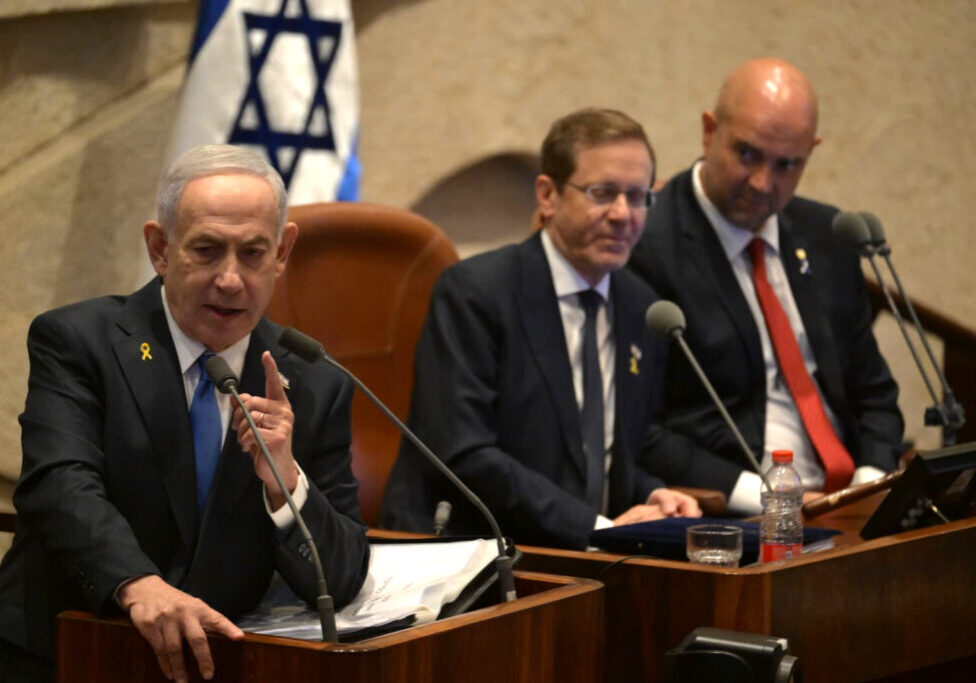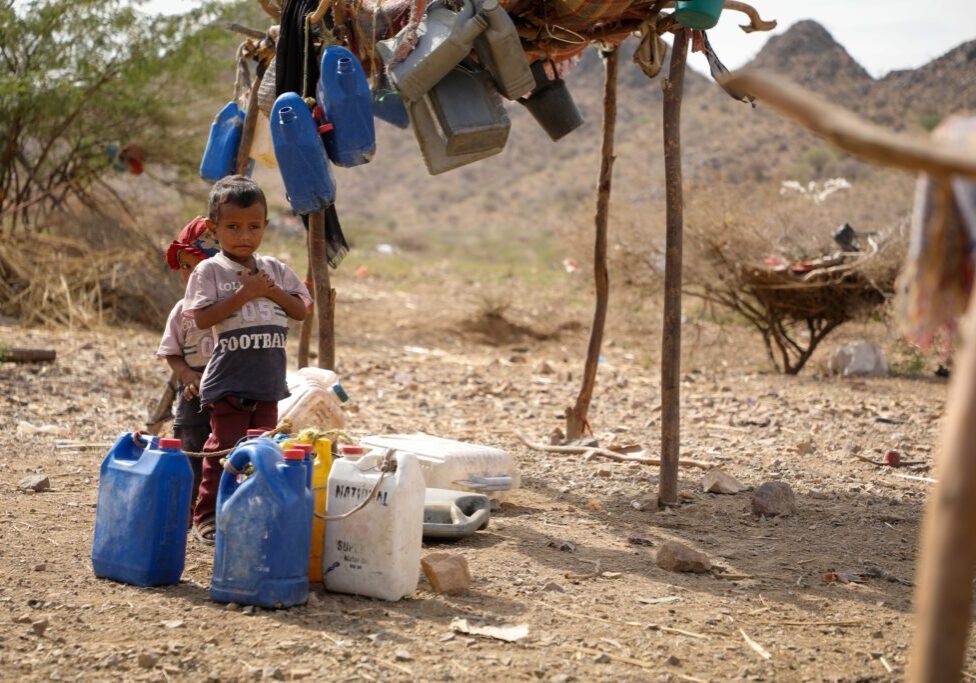FRESH AIR
Backgrounder: The Temple Mount “Status Quo”
June 29, 2022 | Tammy Reznik

On a nondescript day in the middle of May, three teenage boys make their way to the holiest site in Jewish tradition, the location of Judaism’s two ancient temples, Jerusalem’s Temple Mount. Once there, the boys pause, bow down and recite the Jewish declaration of faith – Shema Yisrael. They are unexpectedly apprehended by police, and charged with the offence of disrupting the peace.
In another well-publicised incident in 2018, American historian Shaina Be Hirsch was detained for questioning by officials of the Jordanian-run Waqf (“religious trust”) which administers the 37-acre compound – which as well as its Jewish significance, is also the third holiest site in Sunni Islam, housing the Al-Aqsa Mosque and Dome of the Rock shrine. Be Hirsch had been innocently recording a Vlog on the archaeology of the holy site, and had ensured that she entered the Temple Mount during a “permitted” time of the day for non-Muslims, as per rules of the “status quo” arrangement (see below for more for more on this.) These seemingly innocuous incidences highlight the precarious state of affairs at the site, often touted as “the emotional centre of the [Arab-Israel] conflict”.
Did the teenagers’ decision to pray at the Temple Mount/ Al-Aqsa compound constitute a violation of the current rules around the status quo; which for almost half a century have dictated that Jews are allowed to visit the site but not pray there? According to one ruling by Judge Sahrai of the Jerusalem Magistrate’s Court, they did not – vacating an order barring them from the site for 15 days. Yet in a surprising twist, a judge from a higher court overruled Sahrai’s decision a few days later and the punishment was reinstated. This back and forth is emblematic of the challenges to administering the status quo at this ultra-sensitive religious site on the ground, and mirrors the evolving sentiments of the Israeli public on this touchy topic.
A recent poll of Israelis conducted in April this year revealed that over 50 percent of Israelis are in support of prayer at the site. In fact, since 2021, there has been a subtle shift, with more and more small groups, visiting the holy site and whispering prayers in quiet corners of the compound, and police often turning a blind eye to the practice as long as they are subtle about it (unlike the teens mentioned above.) Fast forward a few weeks to Jerusalem Day on May 29, and a record number of Israelis made the decision to visit the Temple Mount.
Statistically speaking and running counter to the numerous claims by Palestinian groups, the Temple Mount has not been a site of mass visitations by Jews, nor is it “in danger” or under threat of destruction or violation. There have been pockets of less restraint over the years, but overwhelmingly, a respect for the status quo has prevailed, and the police have sought to reaffirm this stance. Though legally under the governance of Israel, in perhaps Israel’s greatest concession in the aftermath of the 1967 Six-Day War, Israel transferred the administering of the site to the Waqf. The status quo which prevails to this day was sewn together over the coming months and years. However, decades of “damned if you do damned if you don’t” claims from Islamic and Palestinian sources have led to wear and tear on this arrangement, and the seams are beginning to fray.
Let’s pause for a moment to orientate ourselves.
The Basics
The Temple Mount / Noble Sanctuary or Har Habayit, as it is referred to in Hebrew, is the holiest site in Judaism and third holiest in Sunni Islam. The site of both Jewish Temples and the location where Abraham is believed to have bound Isaac in preparation for sacrifice according to Genesis 22, it has served as a major symbol of Jewish identity and the direction of Jewish prayer throughout the millennia. Muslims, who name Jerusalem as al-Quds (“the holy place”), believe the site to be the spot where the Prophet Muhammad ascended to heaven on his mystical “night journey”.
Significant to both faiths, it has also become a site of continued conflict, a veritable symbol of broader issues of rightful ownership and negotiation. Media reports often obfuscate the legal realities of the site and contribute to wider misrepresentations.
The Temple Mount is in the eastern portion of Jerusalem that Israel conquered from Jordan and annexed after the 1967 Six-Day War. While many countries do not recognise Israel’s annexation of eastern Jerusalem, this does not change the fact that legal and administrative oversight of the site rests with Israel, either as legitimate sovereign or under international law related to belligerent occupation. The Islamic Waqf has been permitted to continue overseeing the administration of the compound because Israel, as controlling authority, has elected to allow it to do so as a gesture toward Muslim and Arab sensibilities, not because of any legal obligation to do so.
The Status Quo and the Reunification of Jerusalem in 1967
As noted, under the prevailing status quo at the Temple Mount – an unwritten understanding – Muslims are allowed to visit and pray at the site and its two holy buildings at any time. Jews, and all other non-Muslims, are only allowed to visit during limited time slots and cannot pray. Over recent years, they have not been permitted to enter either the Al-Aqsa Mosque or the Dome of the Rock.
The foundations of the status quo understanding were laid following Israel’s capture of Jerusalem during the 1967 Six-Day War.
In the immediate aftermath of the capture, the commander of the paratrooper force in charge, Mordechai Gur, gushed, “The Temple Mount is in our hands,” and marked the unexpected reunification of the city of Jerusalem by raising the Israeli flag atop the Mount.
However, Gur’s excitement was swiftly quashed by the Israeli Defence Minister Moshe Dayan, who looked to mitigate the danger of conflict on religious grounds, and ordered the flag removed, and IDF soldiers to depart the Mount. The decision then was made: Israel would make a huge concession by retaining security control but allowing day-to-day administration of the compound to continue to be maintained by the Muslim Waqf religious authorities, overseen by Jordan’s government.
Jewish worship would be encouraged at the neighbouring and newly liberated Western Wall – Judaism’s holiest place of prayer – but not allowed on the Temple Mount itself. This decision was made easier by the fact that while the Mount is Judaism’s holiest site as the location of the former temples, most Orthodox Jews considered it too holy to even visit, for risk of accidentally entering the site of the Temple sanctuary known as the Holy of Holies, which was reserved for only the most senior priests (though this has been slowly changing).
Before 1967
Jordan ruled the West Bank and east Jerusalem from 1948 until the 1967 Six-Day War. Under its rule, Jews were not allowed to visit Jerusalem’s holy sites, but the Temple Mount was nonetheless open to non-Muslim visitors during set times, much as it is today. This was also the situation prior to 1948 – Muslim Waqf administration with non-Muslim visitors permitted during restricted hours.
Under the Israeli-Jordanian peace treaty signed in 1994, both sides promised to “provide freedom of access to places of religious and historical significance” while Israel promised to respect “the present special role of the Hashemite Kingdom of Jordan in Muslim Holy shrines in Jerusalem.” This pledge also affects the complicated situation at present.
Some Statistics
In keeping with the agreement, the numbers of Jews who visit are very small in comparison to Muslim visitors. Yet these numbers have been gradually increasing, a trend projected to continue. The reasons behind this are not entirely clear, however this could be an indicator of a shift in sentiment amongst the Israeli population.
More than 250,000 Palestinians can sometimes visit Al-Aqsa Mosque in a single day during the holy month of Ramadan each year. Palestinians from the West Bank, Gaza and Arab neighbourhoods in Israel converge on the Al-Aqsa compound for Friday prayers. This year was no exception. On Monday May 2, according to the Islamic Waqf, some 200,000 Muslims attended Eid al-Fitr holiday prayers at the Al-Aqsa Mosque to cap off the Ramadan holy month.
By comparison, 40,000 Jews have been estimated to have visited the Temple Mount over the past 12 months. While these are much lower numbers, they, interestingly, appear to be a new record for such visits, according to data compiled by the Temple Mount Movement NGO. This NGO estimates that by the end of 2022, about 43,000 Jews will have visited the site – a projected increase of some 5,000 from the previous record, set in 2019.
Yet these “record” numbers remain comparatively small. The number of Muslim visitors to the site during this same period of time exceeded 10 million. Meanwhile, the number of foreign tourists who visited the Temple Mount each year over the last decade averaged about 327,000.
Opposing Narratives – Using the Mount to Fan the Flames of Conflict
Whist the prohibition of Jewish prayer on the Mount has become the most controversial element of the status quo for the Jewish public, with many Israelis pained at being denied the right to pray at what is, after all, Judaism’s holiest site, every Israeli government, including on the political right, has upheld the status quo – despite the recent toleration of some discrete whispered prayer.
Even so, the persistent accusations against Israel and Jews of trying to “storm” the Al-Aqsa Mosque or even having plans to destroy it continue to be a core contributor to the tension in Jerusalem and indeed the wider Israeli-Palestinian conflict. Despite it being a centre of holiness and prayer, Jerusalem’s holiest site has too often been used as a tool of incitement.
This year, like last year, saw an uptick in tensions during the holy month of Ramadan. Not for the first time, a handful of radical Jews expressed a desire to make an animal sacrifice at the Temple Mount during the Jewish holiday of Passover. Radical Jewish groups have expressed such plans before and Israeli security forces have always prevented such activists from obtaining access to the holy site, as they also did this year.
However, this year, Hamas and the Palestinian Authority used these obscure plans as pretext for premeditated escalation planned to coincide with the always tense Ramadan – especially via posts spread on social media. An organised effort to get Palestinian activists to come to the Mount to “fight back” against these supposed Jewish plans was organised, including the stockpiling of massive stocks of weaponry, fireworks, and rocks within the compound, even within the Al-Aqsa Mosque itself.
The claims that there is an impending threat to the mosque has been a popular trope used to motivate Palestinians to take violent action against Jews dating all the way back to the 1920s and 30s, in the time of the notorious Grand Mufti of Jerusalem Haj Amin al-Husseini (who later became a Nazi collaborator). In 1928, Husseini, de facto leader of the Arabs of British Mandate Palestine, used the supposed “threat” to the mosque as the pretext for the terror wave that climaxed in the 1929 Hebron massacre of Jews, destroying a Jewish community which had been in existence for millennia.
Similarly, slanderous allegations about a threat to the mosque were wielded as a means to corral the masses under PLO leader Yasser Arafat between 1996 and 2000 – many people forget that the “Second Intifada” launched in 2000 was named the “Al-Aqsa Intifada” by Arafat and his collaborators, and supposed to protect the mosque. Before that, in 1996, Arafat orchestrated a three-day round of violence, known as the Tunnel Riots, which led to more than 100 deaths, by stoking claims that a new opening to an existing archaeological tunnel next to the Temple Mount was an Israeli effort to undermine the Mount itself.
The current leader of the Northern Branch of the Islamic Movement in Israel today, Sheikh Ra’ed Salah, continues this slander, as does Hamas, which launched a barrage of missiles at Jerusalem ostensibly to protect the Mosque last year, resulting in a bloody 11-day war.
Even “ moderate” Palestinian Authority leader Mahmoud Abbas has fanned the flames of conflict by making false and inflammatory claims about the compound. In 2015 he famously said, “Al-Aksa is ours and so is the Church of the Holy Sepulchre. They have no right to desecrate them with their filthy feet.”
Abbas also said the Palestinians were determined to prevent Israel from going forward with its scheme to “divide” the Aqsa Mosque compound.
He praised Muslim activists who were paid by Islamist groups to harass Jewish visitors to the Temple Mount, saying, “Each drop of blood that was spilled in Jerusalem is pure blood as long as it’s for the sake of Allah. Every shahid (martyr) will be in heaven and every wounded person will be rewarded, by Allah’s will.
The Jews are regularly accused of wanting to destroy the Al-Aqsa Mosque and replace it with a third Jewish Temple. Misleading claims that Israel is planning to change the status quo on the Mount and permit open Jewish prayer there, perhaps even inside the Al-Aqsa Mosque, are frequent – and these are presented as part of the wider plot to eventually destroy or take over the Mosque.
Nadav Shragai, an author who has specialised in researching and writing about this issue, encapsulated the degree of incongruity in his seminal piece. “The ‘Al-Aksa Is in Danger’ Libel: The History of a Lie”:
“Absurdly, it strikes at the Jewish people and the State of Israel precisely in the place where the Jewish state has made the most generous gesture, the greatest concession, ever made by one religion to another – on the Temple Mount, the holiest place of the Jewish people and only the third place in importance for the Muslim religion.”
It is not surprising that some Israelis have come to question the value of maintaining the status quo, at the cost of Jewish freedom of worship, in the face of Muslim incitement which treats Israel’s generous concession as simply an evil conspiracy.
Yet Israel continues to implement measures designed to allay Muslim concerns in various ways – for instance, by generally assigning non-Jewish Druze officers to guard the main entrances to the Temple Mount and by barring non-Muslims from visiting the Temple Mount during the last roughly ten days of Ramadan this year, a policy also implemented in many previous years.
Sadly, this year, like the last, saw violent clashes emerging between Palestinians and Israeli forces at the sacred site. The site was used to stockpile weapons and as a place from which to throw stones and rocks.
Israeli leaders expressed support for the status quo, but also a measure of frustration with the way false claims about it are being abused to incite violence. During the clashes this past April, Foreign Minister Yair Lapid said, “We have no intention to change the status quo or prevent freedom of worship, but we will keep the order in the capital of Israel…Israel is the sovereign and we can be the moderate force taking the public welfare into consideration. Our goal is for Jerusalem to be calm on the holiday…We will not allow fireworks to be thrown from the mosque at Jews on the Temple Mount or anywhere.”
Meanwhile, Prime Minister Naftali Bennett said in a radio interview that “neighbouring states need to show leadership against the lies.”
Whether the status quo will persist is hard to know. Putting extremist elements aside, there appears to be a middle ground movement, and a change in Israeli public perception around the ban on Jewish prayer – but the real threat to the “status quo” comes from Palestinian and Islamist groups who exploit it in order to promote violence. Relentless falsehoods and incitement lead to violence and have the converse affect, convincing many Israelis that there is little value in maintaining a generous “status quo” which limits Jewish religious rights at the holiest place in the world for Jews. If that status quo is today being called into question after nearly 50 years, these lies, incitement and violence are the main reason why this is the case.
Tags: Israel, Jerusalem, Palestinians, Temple Mount
RELATED ARTICLES

The Government’s actions still fall short: Joel Burnie on FDD Morning Brief

“The writing was on the wall for a number of years”: Colin Rubenstein on Channel 7 Weekend Sunrise





















